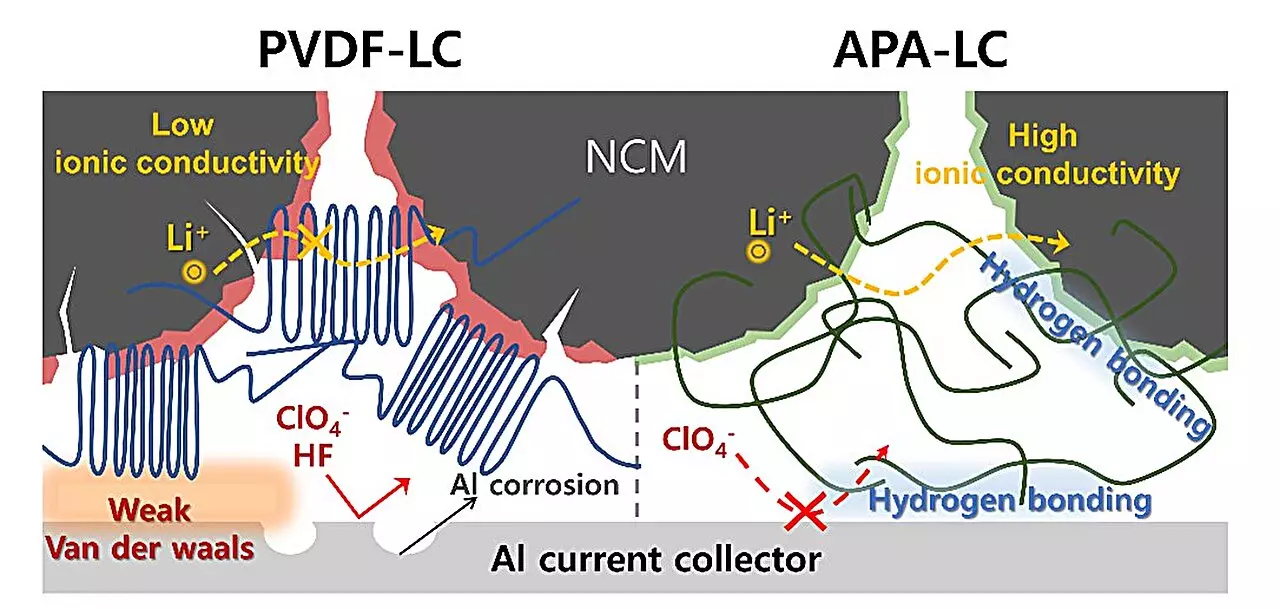As the world confronts escalating environmental issues, the necessity for sustainable practices in various industries cannot be overstated, particularly within the realm of battery technology. Traditional lithium batteries have long been criticized for their dependency on toxic fluorinated compounds. These materials, such as polyvinylidene fluoride (PVDF) and lithium hexafluorophosphate (LiPF6), not only pose environmental hazards but also release harmful substances during their lifecycle. With the European Union setting stringent regulations on per- and polyfluoroalkyl substances (PFAS), the urgency to develop eco-friendly alternatives is more significant than ever. Recent advancements in battery technology emphasize the importance of sustainable materials, leading to a new paradigm in energy storage solutions.
The foundation of traditional lithium batteries rests on a system that has proven effective in performance but detrimental to environmental health. The reliance on compounds such as PVDF, known for its non-biodegradability, and LiPF6, which generates toxic byproducts, creates a dilemma for manufacturers. Researchers worldwide recognize this challenge and are exploring innovative solutions to not only comply with upcoming regulations but also enhance battery longevity and performance.
A research collaboration between POSTECH and Hansol Chemical has yielded significant progress in this area. They have successfully developed a battery system devoid of fluorinated compounds, presenting an alternative that not only adheres to regulatory standards but also optimizes functional performance. This transition away from conventional materials is imperative as the industry seeks to respond to consumer demand for greener technologies.
At the heart of this pioneering research is the newly designed APA-LC system, which integrates a lithium perchlorate (LiClO4) electrolyte and a non-fluorinated aromatic polyamide (APA) binder. Unlike traditional methods, this innovative system eliminates any fluorinated components, thereby alleviating concerns associated with toxicity and environmental degradation.
The APA binder, developed using proprietary technology from Hansol Chemical, enhances the structural integrity of the cathode by ensuring a robust connection between the active materials and the aluminum current collector. This attribute is crucial in preventing corrosion and extending the overall life of the battery. Such enhancements are pivotal in addressing the longevity issues present in traditional lithium batteries.
Simultaneously, the lithium perchlorate-based electrolyte enriches the battery’s operational efficiency. By incorporating lithium chloride (LiCl) and lithium oxide (Li2O), the system facilitates faster lithium ion migration, which ultimately translates to superior output performance. In rigorous testing, the APA-LC system has demonstrated a remarkable 20% improvement in capacity retention compared to its fluorinated counterpart, confirming that innovation can indeed lead to better outcomes without compromising environmental integrity.
The introduction of a high-capacity 1.5 Ah pouch cell utilizing the APA-LC system represents a significant achievement in the world of battery technology. This cell has shown exceptional discharge capacity and impressive performance during rapid charging scenarios. The successful demonstration of this entirely non-fluorinated battery system heralds a transformative shift in terms of scalability and practicality, presenting manufacturers and consumers alike with viable and sustainable choices.
Professor Soojin Park from POSTECH expressed enthusiasm about the findings, emphasizing the dual benefits of heightened capacity retention and enhanced stability inherent in their system. As the industry faces critical scrutiny over its ecological impact, the transition to non-fluorinated systems not only promotes sustainability but also fosters innovation.
Additionally, stakeholders like Managing Director Young-Ho Yoon of Hansol Chemical note the commercial potential of these advancements, as they open doors to a projected KRW 1.7 trillion cathode binder market by 2026. As the battery industry continues to evolve, ongoing research and development are essential for building on these initial successes and positioning eco-friendly materials at the forefront of technology.
The work accomplished by the POSTECH and Hansol Chemical teams signifies a vital step forward in addressing the environmental challenges associated with battery technology. The transformation towards fluorine-free materials not only complies with emerging regulations but also sets a new standard in the performance and sustainability of energy storage solutions. Future endeavors in this arena will undoubtedly shape the battery industry, emphasizing eco-friendly initiatives that will benefit both consumers and the environment. As we look ahead, the need for sustainable practices will remain paramount, guiding the development of new technologies and setting the foundation for a healthier planet.


Leave a Reply